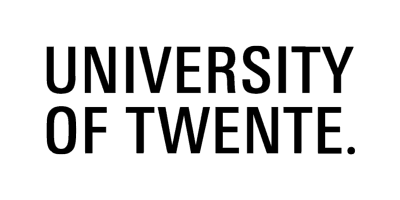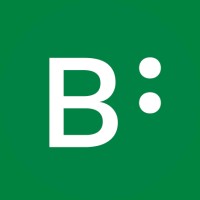Desk research
Here we will discuss the general research we did on visual and auditory impairments. The complete research can be found here.
Deafness
Deafness
In 2024, over 5% of the world's population require som form of hearing rehabilitation to address their disabling hearing loss. Levels of hearing loss are measured in number of decibel under the actual loudness. Slight hearing loss begins at approximately 16db with profound hearing loss being at over 90db.
There are many different causes of hearing loss. Most genetic factors are prenatal meaning they occur before birth, however, age related hearing loss can also be tied to genetics. Other causes such as trauma or very loud noises are also common.
One of the most important systems in place to help the deaf is sign language. These combination of gestures and hand movements relate to specific words or letters. Most languages have their own deaf counterparts.
In 2024, over 5% of the world's population require som form of hearing rehabilitation to address their disabling hearing loss. Levels of hearing loss are measured in number of decibel under the actual loudness. Slight hearing loss begins at approximately 16db with profound hearing loss being at over 90db.
There are many different causes of hearing loss. Most genetic factors are prenatal meaning they occur before birth, however, age related hearing loss can also be tied to genetics. Other causes such as trauma or very loud noises are also common.
One of the most important systems in place to help the deaf is sign language. These combination of gestures and hand movements relate to specific words or letters. Most languages have their own deaf counterparts.

Visual impairment
According to the European Blind Union, there are approximately 30 million blind and partially sighted individuals in (geographical Europe), with an average of 1 in 30 Europeans experiencing sight loss. Among them, there are four times as many partially sighted persons as blind individuals. Data from the World Health Organization in 2010 estimates that in Europe, there are 2,550,000 blind people and 23,800,000 low-vision people, leading up to 26,350,000 visually impaired individuals (European Blind Union, n.d.).
There are many different causes of visual impairments with the majority stemming from genetic disorders and trauma. One of the sub causes of this is age related macular degeneration. This is how peoples vision deteriorate over time. Those that are most affected by this will often go through many stages of blindness. There are four main categories of blindness as follows.
Visual impairment
According to the European Blind Union, there are approximately 30 million blind and partially sighted individuals in (geographical Europe), with an average of 1 in 30 Europeans experiencing sight loss. Among them, there are four times as many partially sighted persons as blind individuals. Data from the World Health Organization in 2010 estimates that in Europe, there are 2,550,000 blind people and 23,800,000 low-vision people, leading up to 26,350,000 visually impaired individuals (European Blind Union, n.d.).
There are many different causes of visual impairments with the majority stemming from genetic disorders and trauma. One of the sub causes of this is age related macular degeneration. This is how peoples vision deteriorate over time. Those that are most affected by this will often go through many stages of blindness. There are four main categories of blindness as follows.


Levels of blindness
Levels of blindness
Partial blindness
Complete blindess
Congenital blindess
Legal blindness
Partial blindness
Complete blindess
Congenital blindess
Legal blindness
Existing aids and systems
Aids for the blind and visually impaired are tools and technologies that enhance accessibility and independence. They include devices like screen readers, magnifiers, white canes, and tactile graphics, enabling users to perform daily tasks and access information more easily.
Text-to-Speech Reader: software that converts text displayed on a screen into speech or braille output, enabling blind users to access digital content such as websites, documents, and emails.
White Canes: Mobility aids used by people with visual impairments to detect obstacles and navigate their surroundings safely.
“Talking” products: These may include watches/clocks quipped with audible features, such as spoken time announcements or tactile markings, to help users keep track of time independently. As well as libraries that provide audiobooks and other materials in accessible formats for individuals who are blind or visually impaired. Some examples include blood pressure monitors, thermometers, pill organizers, etc.
Magnifiers: devices that magnify text, images, or objects, making them easier to see for individuals with low vision.
Labels and markers: Audio markers, tactile markers, and raised bumps are used to label items, such as the controls on appliances like washing machines and objects stored in cupboards.
Braille: The special language for blind people, based on feeling different types of organized do
A special section of affordances for the visually impaired are in travel solutions. Our participant had in his first communication expressed a love for travel which initiated this focus on travel. There are many special services and systems in place to assist the blind in traveling and here are some of the most notable ones.
NS Flex for blind or visually impaired people:There is a special NS flex subscription for blind or visually impaired people, the user does not have to charge the card but gets a monthly invoice afterwards. This card can be used for all the companies operating in the public transport sector.
Special companion card:With a public transport companion card, one companion travels with the user for free. A public transport companion card is in your name, so the user can choose who he or she takes with you as a companion for each trip.
Travel assistance on stations:The NS also has special travel assistance for people with an impairment. The educated travel attendant helps to get in and of the train. This service must be reserved beforehand in the NS-app and is available on most of the stations 24/7 for the NS trains.
‘1 step further’ service:On the bigger stations there is also the service to get help by the change to the next step of public transport.
Existing aids and systems
Aids for the blind and visually impaired are tools and technologies that enhance accessibility and independence. They include devices like screen readers, magnifiers, white canes, and tactile graphics, enabling users to perform daily tasks and access information more easily.
Text-to-Speech Reader: software that converts text displayed on a screen into speech or braille output, enabling blind users to access digital content such as websites, documents, and emails.
White Canes: Mobility aids used by people with visual impairments to detect obstacles and navigate their surroundings safely.
“Talking” products: These may include watches/clocks quipped with audible features, such as spoken time announcements or tactile markings, to help users keep track of time independently. As well as libraries that provide audiobooks and other materials in accessible formats for individuals who are blind or visually impaired. Some examples include blood pressure monitors, thermometers, pill organizers, etc.
Magnifiers: devices that magnify text, images, or objects, making them easier to see for individuals with low vision.
Labels and markers: Audio markers, tactile markers, and raised bumps are used to label items, such as the controls on appliances like washing machines and objects stored in cupboards.
Braille: The special language for blind people, based on feeling different types of organized do
A special section of affordances for the visually impaired are in travel solutions. Our participant had in his first communication expressed a love for travel which initiated this focus on travel. There are many special services and systems in place to assist the blind in traveling and here are some of the most notable ones.
NS Flex for blind or visually impaired people:There is a special NS flex subscription for blind or visually impaired people, the user does not have to charge the card but gets a monthly invoice afterwards. This card can be used for all the companies operating in the public transport sector.
Special companion card:With a public transport companion card, one companion travels with the user for free. A public transport companion card is in your name, so the user can choose who he or she takes with you as a companion for each trip.
Travel assistance on stations:The NS also has special travel assistance for people with an impairment. The educated travel attendant helps to get in and of the train. This service must be reserved beforehand in the NS-app and is available on most of the stations 24/7 for the NS trains.
‘1 step further’ service:On the bigger stations there is also the service to get help by the change to the next step of public transport.
Travel agencies
There are specialized travel agencies that exclusively focus on the visually impaired. We found three that were well known and highly regarded.
Travel agencies
There are specialized travel agencies that exclusively focus on the visually impaired. We found three that were well known and highly regarded.
Dsu group 3
Q2, 2024



